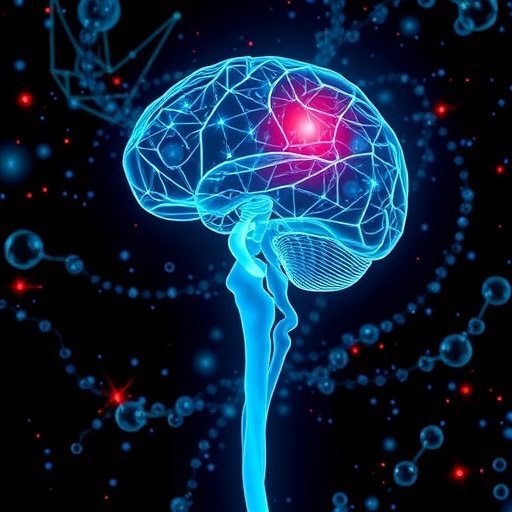
In the rapidly evolving arena of cellular biology, researchers have achieved a groundbreaking leap in predicting how cells morph in response to various perturbations. A recent study published in Nature Communications introduces a novel transcriptome-guided diffusion model designed to unravel the complex dynamics underlying cellular morphology changes triggered by external and internal stimuli. This innovative approach offers unprecedented foresight into cellular behavior, providing a potent tool for both fundamental biological research and therapeutic development.
Central to the study is the marriage between transcriptomic data—the comprehensive cataloging of gene expression across the genome—and advanced computational modeling techniques. The authors conceptualize cellular morphology, an intricate phenotypic manifestation of numerous molecular and environmental factors, as a dynamic landscape that can be computationally navigated. By leveraging high-dimensional gene expression profiles, the model predicts morphological outcomes following genetic or pharmacological perturbations with striking accuracy.
The challenge historically confronted in cellular biology is the difficulty of forecasting phenotypic adaptations based purely on molecular signatures. While transcriptomic analyses provide rich snapshots of cellular states, bridging the gap between these molecular snapshots and robust phenotypic predictions has remained elusive. Traditional models largely emphasized downstream effects or relied on limited datasets, often failing to capture the multivariate and nonlinear aspects of cellular reprogramming.
Wang and colleagues tackle this bottleneck head-on by formulating a diffusion process on the transcriptomic manifold, essentially simulating the flow of cellular states through a structured gene expression space. Their model treats cellular transitions in morphology as probabilistic diffusion movements guided by the underlying transcriptomic architecture. This theoretical framework emulates the biochemical and biophysical forces at play, enabling the model to predict how perturbations induce trajectory shifts within the space of possible cell shapes.
One of the key strengths of this approach lies in its incorporation of transcriptome-wide data to guide morphological inference. Instead of reducing cellular identity to a handful of markers, the diffusion model ingests global expression patterns, thus encapsulating a holistic view of the cell’s regulatory state. This comprehensive perspective increases the model’s robustness and sensitivity to subtle transcriptomic alterations that manifest as tangible morphological changes.
The study’s validation process involved extensive cross-referencing of predicted morphological outcomes against experimentally obtained cell images under various perturbation conditions. This comparative analysis demonstrated a high correlation between the model’s output and observed cellular morphologies, affirming the predictive power of the transcriptome-guided diffusion framework. Such validation safeguards the model’s utility in practical applications where experimental datasets might be limited or costly.
From a technical standpoint, the diffusion model integrates principles from manifold learning and stochastic processes, enabling it to capture the nonlinearities in biological systems. By representing cells in a latent space shaped by gene expression similarity, the model uses stochastic differential equations to simulate how a cell’s state migrates under perturbation influences. This mathematical rigor facilitates exploration of cell state transitions that traditional linear models fail to elucidate.
The implication of these findings extends well beyond academic curiosity. In the realm of drug discovery, the ability to predict cellular responses to candidate compounds could expedite screening processes, reduce failures, and enable precision targeting of cellular pathways. Moreover, understanding the morphology changes linked with genetic perturbations can illuminate mechanisms of disease progression and cellular adaptation, informing new therapeutic strategies.
Notably, the paper discusses several perturbation categories, including genetic knockouts, knockdowns, and various pharmacological agents, showcasing the model’s versatility. This adaptability suggests the diffusion framework could serve as a universal tool in cellular phenotype forecasting, applicable across diverse biological systems and experimental paradigms.
Beyond morphology, the principles underlying this transcriptome-guided diffusion model hint at broader applicability in predicting other complex traits influenced by gene expression. For example, cell motility, metabolic activity, or differentiation propensity might be similarly forecasted by adapting the diffusion process to distinct phenotypic manifolds, potentially revolutionizing the field of systems biology.
The study also addresses the model’s scalability and integration with current experimental workflows. The authors emphasize that the transcriptome datasets fueling the model are increasingly accessible with advancements in single-cell RNA sequencing technologies. This synergy between computational power and experimental resolution ensures the model can continuously refine its predictions as more data become available, endorsing an iterative cycle of improvement.
Furthermore, the model’s probabilistic nature embraces biological variability rather than attempting to eliminate it. By producing distributions of likely morphological outcomes rather than rigid predictions, the diffusion process aligns well with the inherent stochasticity of cellular processes. This characteristic enhances the model’s realism and practical relevance in understanding heterogeneous cell populations.
The diffusion model’s design also prioritizes interpretability, a crucial aspect for translational research. Scientists can pinpoint which transcriptomic shifts heavily influence morphological changes, facilitating the identification of regulatory hubs or pathways that drive phenotypic outcomes. This transparency aids not only in prediction but also in hypothesis generation and experimental planning.
From a technological perspective, the authors employed a synergy of machine learning algorithms, statistical physics concepts, and bioinformatics pipelines. By merging these disciplinary insights, the model exemplifies how interdisciplinary techniques can surmount longstanding challenges in biological prediction and data integration.
Perhaps most striking is the potential this method holds for personalized medicine. By tailoring the transcriptomic input to individual patient-derived cells, clinicians could forecast morphological responses to therapeutic agents, thereby customizing treatment strategies to achieve optimal efficacy and minimize adverse effects. This personalized predictive capability marks a paradigm shift in how cellular phenotypes inform clinical decision-making.
As the model matures, its integration with real-time imaging and live-cell monitoring systems could enable dynamic tracking and prediction of cellular morphology evolutions, transforming static snapshots into fluid, actionable biosignatures. This real-time predictability would shape next-generation diagnostic and prognostic tools.
In conclusion, the transcriptome-guided diffusion model pioneered by Wang, Fan, Guo, and collaborators represents a transformative advance in cellular biology. By harnessing transcriptomic depth and computational sophistication, the study opens new frontiers for predicting life’s microscopic architects as they adapt, respond, and evolve. Its wide-ranging applications promise to accelerate research across drug development, disease modeling, and personalized therapeutics, setting the stage for a new era of predictive biology.
Subject of Research: Prediction of cellular morphology changes using transcriptome-guided computational models under various perturbations.
Article Title: Prediction of cellular morphology changes under perturbations with a transcriptome-guided diffusion model.
Article References:
Wang, X., Fan, Y., Guo, Y. et al. Prediction of cellular morphology changes under perturbations with a transcriptome-guided diffusion model.
Nat Commun 16, 8210 (2025). https://doi.org/10.1038/s41467-025-63478-z
Image Credits: AI Generated
Tags: advanced computational techniques in biologybridging molecular data and phenotypic predictionscellular morphology predictioncellular response to perturbationscomputational modeling in biologygene expression dynamicshigh-dimensional gene expression profilesmolecular signatures in cell biologyphenotypic adaptations in cellspredicting morphological outcomestherapeutic development in cellular researchtranscriptome-guided diffusion model




